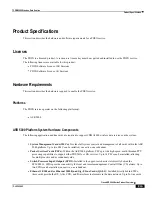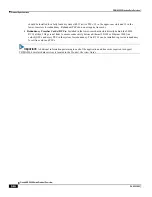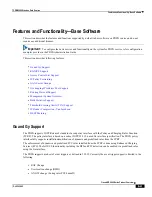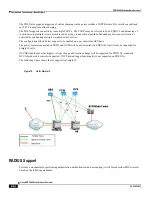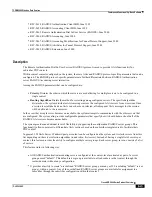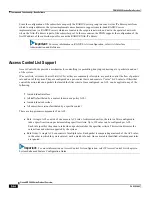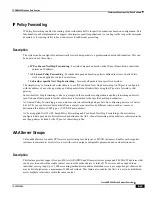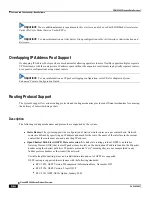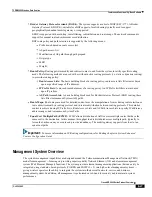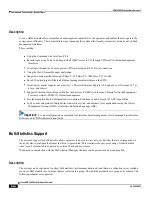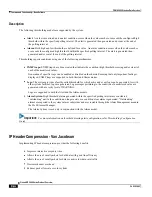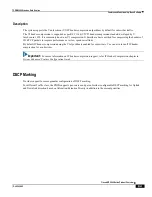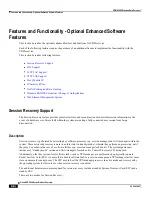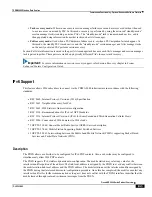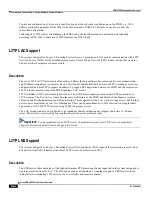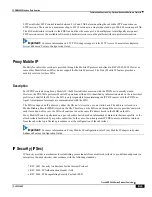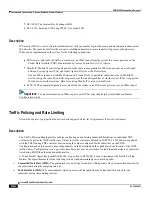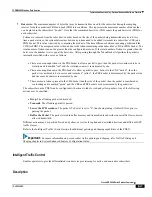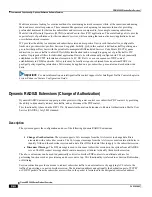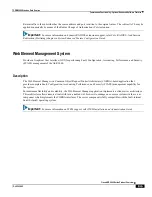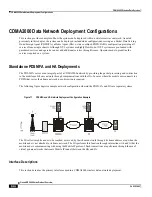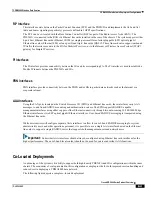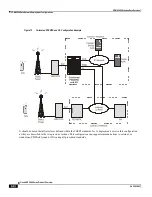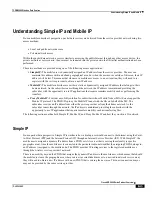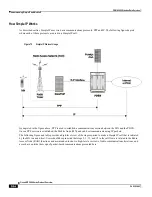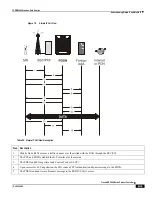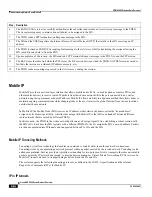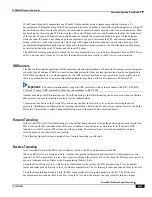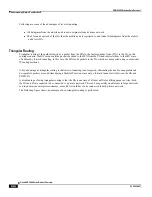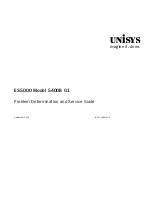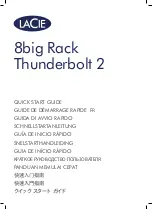
CDMA2000 Wireless Data Services
Features and Functionality - Optional Enhanced Software Features ▀
Cisco ASR 5000 Series Product Overview ▄
OL-22938-02
Task recovery mode:
Wherein one or more session manager failures occur and are recovered without the need
to use resources on a standby PSC. In this mode, recovery is performed by using the mirrored ―standby-mode‖
session manager task(s) running on active PACs. The ―standby-mode‖ task is renamed, made active, and is
then populated using information from other tasks such as AAA manager.
Full recovery mode:
Used when a PSC hardware failure occurs, or when a PSC migration failure happens. In
this mode, the standby PSC is made active and the ―standby-mode‖ session manager and AAA manager tasks
on the newly activated PSC perform session recovery.
Session/Call state information is saved in the peer AAA manager task because each AAA manager and session manager
task is paired together. These pairs are started on physically different PACs to ensure task recovery.
Important:
For more information on session recovery support, refer Session Recovery chapter in
System
Enhanced Feature Configuration Guide
.
IPv6 Support
This feature allows IPv6 subscribers to connect via the CDMA 2000 infrastructure in accordance with the following
standards:
RFC 2460: Internet Protocol, Version 6 (IPv6) Specification
RFC 2461: Neighbor Discovery for IPv6
RFC 2462: IPv6 Stateless Address Autoconfiguration
RFC 3314: Recommendations for IPv6 in 3GPP Standards
RFC 3316: Internet Protocol Version 6 (IPv6) for Some Second and Third Generation Cellular Hosts
RFC 3056: Connection of IPv6 domains via IPv4 clouds
3GPP TS 23.060: General Packet Radio Service (GPRS) Service description
3GPP TS 27.060: Mobile Station Supporting Packet Switched Services
3GPP TS 29.061: Interworking between the Public Land Mobile Network (PLMN) supporting Packet Based
Services and Packet Data Networks (PDN)
Description
The PDSN allows a subscriber to be configured for IPv6 PDP contexts. Also, a subscriber may be configured to
simultaneously allow IPv4 PDP contexts.
The PDSN supports IPv6 stateless dynamic auto-configuration. The mobile station may select any value for the
interface identifier portion of the address. The link-local address is assigned by the PDSN to avoid any conflict between
the mobile station link-local address and the PDSN address. The mobile station uses the interface identifier assigned by
the PDSN during the stateless address auto-configuration procedure. Once this has completed, the mobile can select any
interface identifier for further communication as long as it does not conflict with the PDSN's interface identifier that the
mobile learned through router advertisement messages from the PDSN.
Summary of Contents for ASR 5000 Series
Page 1: ......
Page 26: ......
Page 48: ...New In Release 10 0 SCM Features Cisco ASR 5000 Series Product Overview OL 22938 02 ...
Page 50: ......
Page 58: ......
Page 68: ......
Page 126: ......
Page 138: ......
Page 146: ......
Page 218: ......
Page 236: ......
Page 356: ......
Page 374: ......
Page 422: ......
Page 496: ......
Page 572: ......
Page 654: ......
Page 700: ......
Page 726: ......
Page 784: ......
Page 816: ......
Page 844: ......
Page 906: ......
Page 926: ......
Page 942: ......
Page 943: ...Cisco ASR 5000 Series Product Overview OL 22938 02 Chapter 30 Technical Specifications ...
Page 966: ......
Page 972: ......

